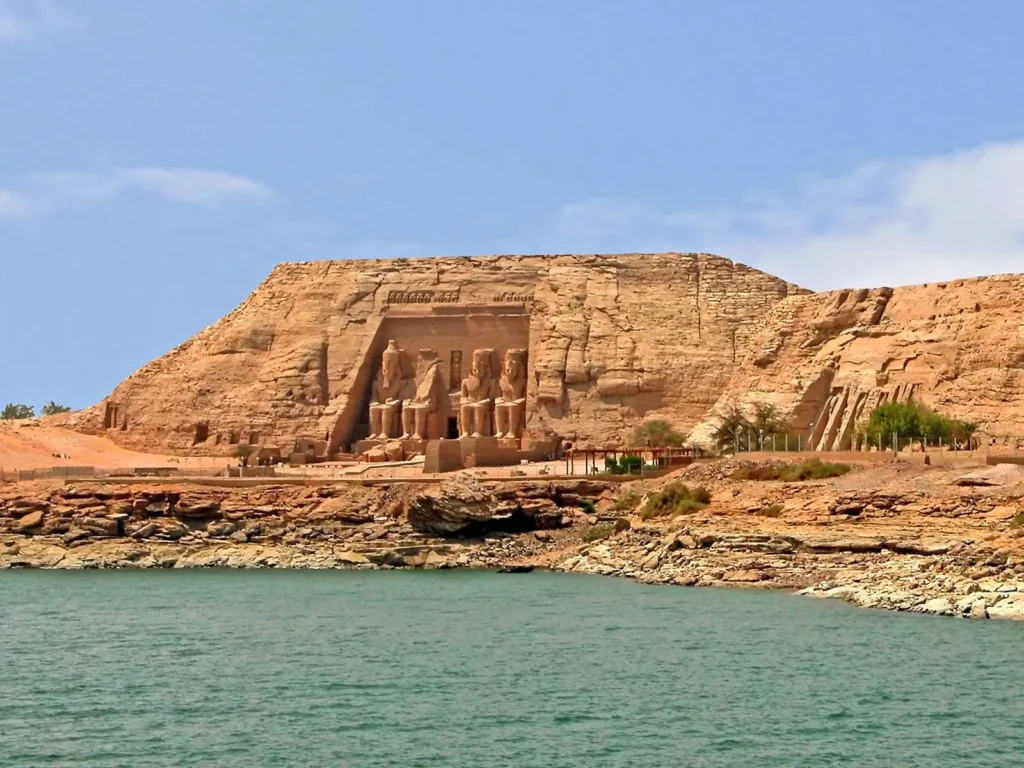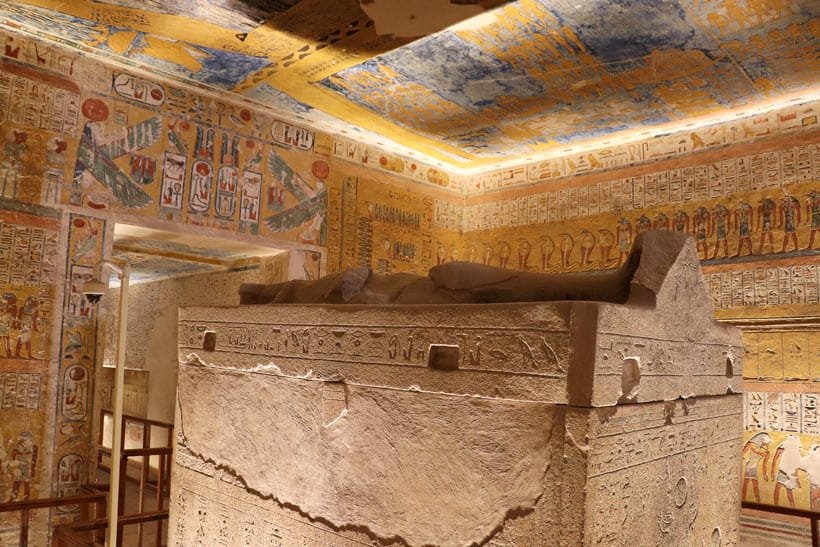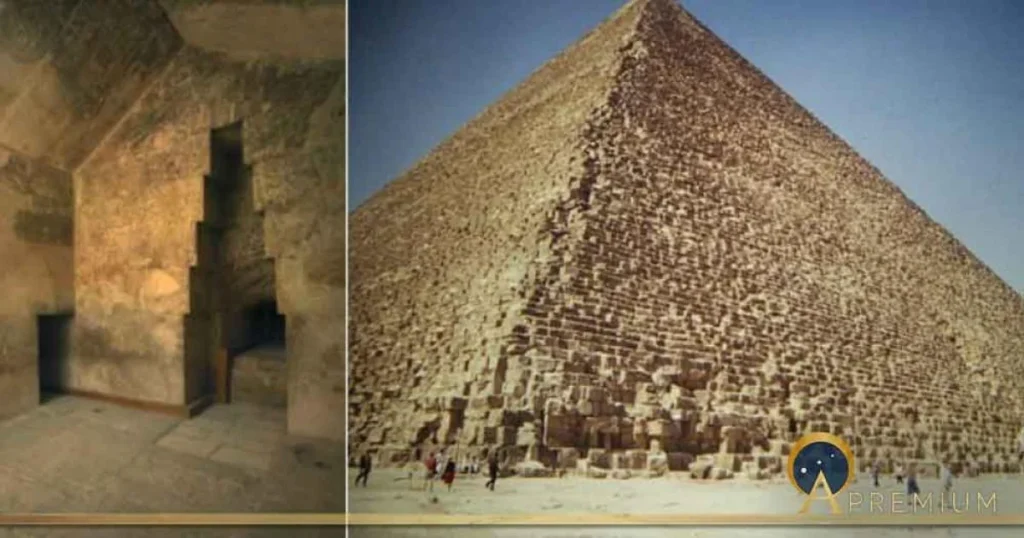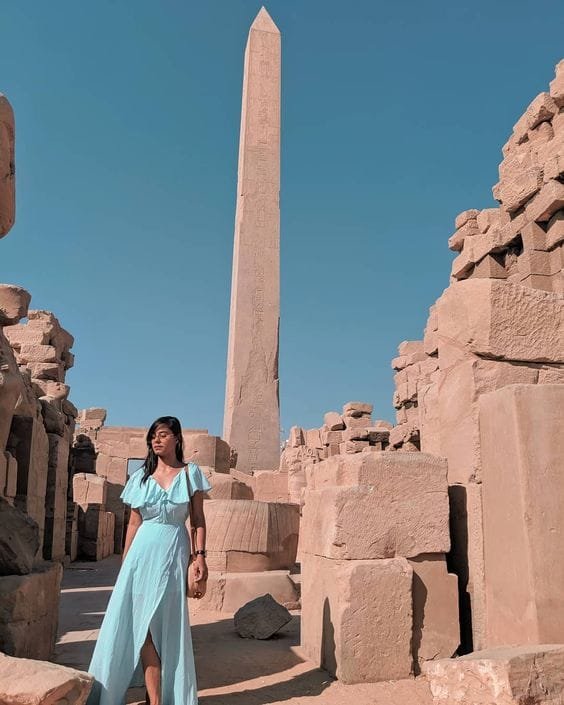Egypt is a land steeped in ancient history, with a wealth of cultural and religious landmarks that have stood the test of time. From the awe-inspiring Great Pyramids of Giza to the sacred temples of Karnak, and the magnificent Temple of Abu Simbel, Egypt’s historical sites offer visitors a unique journey through the ancient world. These iconic landmarks not only reveal the grandeur of ancient Egyptian civilization but also provide a deep spiritual connection to the beliefs, rulers, and architects who shaped this remarkable culture. Whether exploring the tombs of the pharaohs, marveling at the engineering feats that defy logic, or immersing yourself in the myths and legends that continue to capture the imagination, Egypt’s historical sites are an unforgettable experience that transports visitors to the heart of one of the world’s greatest civilizations.
- Egypt Tour Magic
- Egypt Tour Packages
- Excursions in Egypt
- Cairo Tours and Excursions
- Hurghada Tours and Excursions
- Soma Bay Tours and Excursions
- Makadi Bay Tours and Excursions
- Sahl Hasheesh Tours and Excursions
- El Gouna Tours and Excursions
- Marsa Alam Tours and Excursions
- Port Ghalib Tours and Excursions
- El Quseir Tours and Excursions
- Dendera and Abydos Day Tours
- Aswan Tours and Excursions
- Luxor Tours and Excursions
- Alexandria Tours and Excursions
- Sharm El Sheikh Tours and Excursions
- Top Rated Tours in 2025
- Optional Excursions in Egypt
- Private Transfer
- Blogs About egypt
- Ancient Egypt
- What You Need To know Before Your First Trip To Egypt
- Best Places to Visit in Egypt 2025
- Top Attractions in Red Sea Resorts 2025
- Top 10 Tourist Activities in Egypt
- Top 30 Activities You Can’t Miss in Egypt
- The Guide to Guided Tours in Egypt
- Egypt’s Ancient and Modern History
- The Nile River
- The Deserts of Egypt
- Historical Sites in Egypt
- Cairo
- Alexandria
- Luxor
- Aswan
- The Red Sea
- Dendera Temple
- El Fayoum Oasis
- Bahariya Oasis
- Siwa Oasis
- Al Alamein
- Marsa Matruh
- Ancient Egyptian gods
- famous Egyptian dishes
- UNESCO World Heritage sites
- About Us
- Why Egypt Tour Magic
- Egypt Tour Magic
- Egypt Tour Packages
- Excursions in Egypt
- Cairo Tours and Excursions
- Hurghada Tours and Excursions
- Soma Bay Tours and Excursions
- Makadi Bay Tours and Excursions
- Sahl Hasheesh Tours and Excursions
- El Gouna Tours and Excursions
- Marsa Alam Tours and Excursions
- Port Ghalib Tours and Excursions
- El Quseir Tours and Excursions
- Dendera and Abydos Day Tours
- Aswan Tours and Excursions
- Luxor Tours and Excursions
- Alexandria Tours and Excursions
- Sharm El Sheikh Tours and Excursions
- Top Rated Tours in 2025
- Optional Excursions in Egypt
- Private Transfer
- Blogs About egypt
- Ancient Egypt
- What You Need To know Before Your First Trip To Egypt
- Best Places to Visit in Egypt 2025
- Top Attractions in Red Sea Resorts 2025
- Top 10 Tourist Activities in Egypt
- Top 30 Activities You Can’t Miss in Egypt
- The Guide to Guided Tours in Egypt
- Egypt’s Ancient and Modern History
- The Nile River
- The Deserts of Egypt
- Historical Sites in Egypt
- Cairo
- Alexandria
- Luxor
- Aswan
- The Red Sea
- Dendera Temple
- El Fayoum Oasis
- Bahariya Oasis
- Siwa Oasis
- Al Alamein
- Marsa Matruh
- Ancient Egyptian gods
- famous Egyptian dishes
- UNESCO World Heritage sites
- About Us
- Why Egypt Tour Magic
Exploring the Wonders of Egypt's Historical Sites

The Temple of Philae: A Tribute to the Goddess Isis
The Temple of Philae is one of Egypt’s most iconic and beautiful historical sites, dedicated to the goddess Isis, who was revered for her role as the goddess of magic, healing, and motherhood. Located on an island in Lake Nasser, the temple offers a stunning view of the surrounding waters and is known for its tranquility and serenity, making it a must-visit site for history lovers and spiritual seekers alike. Originally located on Philae Island, the temple was relocated to its current position due to the construction of the Aswan High Dam in the 1960s, which threatened to submerge it under the waters of Lake Nasser. The relocation of the temple was a massive engineering feat, preserving the site’s grandeur for future generations to enjoy. The temple's architectural design includes a series of grand pylons, halls, and chambers, all of which are richly decorated with detailed reliefs and inscriptions that depict various mythological scenes, including the worship of Isis, Osiris, and Horus. One of the temple's most notable features is its beautifully carved columns, adorned with hieroglyphic symbols that tell stories of the goddess Isis and her significance in Egyptian religion. These reliefs provide a deeper understanding of the beliefs and rituals that shaped ancient Egyptian society. As visitors explore the temple, they can take in the intricate artwork and feel the spiritual energy of this sacred site. The temple's location on an island surrounded by the waters of Lake Nasser adds a sense of peacefulness and reverence to the experience, allowing visitors to reflect on the deep cultural and religious significance of the site. For those interested in experiencing the temple after sunset, the Sound and Light Show at Philae is an exceptional way to learn about the history and mythology associated with the temple. The show is a stunning visual and auditory presentation that brings the myths of Isis and the ancient Egyptian gods to life, making for a memorable evening at one of Egypt’s most beautiful and sacred sites.

The Step Pyramid of Djoser: The Birth of the Pyramid
The Step Pyramid of Djoser, located in the ancient necropolis of Saqqara, is one of the most important and revolutionary sites in the history of Egyptian architecture. Constructed during the Third Dynasty (around 2670 BCE), it is widely regarded as the earliest large-scale stone structure in Egypt and the first pyramid ever built. Designed by the brilliant architect Imhotep for Pharaoh Djoser, the Step Pyramid marks the beginning of the great pyramid-building era that would later culminate in the massive pyramids at Giza. What makes the Step Pyramid so groundbreaking is its architectural design. Unlike the earlier mastabas (rectangular tombs) built for pharaohs, the Step Pyramid is made up of six distinct tiers, or steps, stacked on top of one another. This unique design marked a significant departure from the traditional flat-roofed tombs and represented an early attempt to create a monumental structure that symbolized the pharaoh’s power and divine status. The Step Pyramid, which stands approximately 62 meters tall, was constructed from limestone, and it was originally encased in smooth limestone, which would have given it a sleek, polished appearance. The pyramid was built as a tomb for Pharaoh Djoser, but its purpose extended far beyond that. It was designed to facilitate the king’s journey to the afterlife and ensure his immortality. The surrounding Funerary Complex includes a walled enclosure, multiple chapels, and an array of underground galleries and tombs that were meant to support the king in his afterlife. The Serdab, a small chamber within the pyramid, housed a statue of Djoser, which was intended to provide the king with a form in the afterlife. What makes the Step Pyramid particularly significant is its role as a precursor to the later pyramids, including the famous Great Pyramid of Giza. The innovations introduced in the construction of the Step Pyramid, such as the use of limestone and the concept of stacking stone layers, would later be refined and expanded upon by subsequent pharaohs. Visitors to Saqqara can explore the pyramid complex and get a sense of the evolution of Egyptian architecture. The Step Pyramid remains a fascinating testament to the ingenuity and creativity of ancient Egyptian engineers and architects, offering a glimpse into the early stages of pyramid construction and the spiritual beliefs of the ancient Egyptians.

The Temple of Abu Simbel: A Monument to Ramses the Great
The Temple of Abu Simbel is one of Egypt’s most awe-inspiring and historically significant monuments. Built by the powerful Pharaoh Ramses II during the 13th century BCE, it stands as a symbol of his immense power, religious devotion, and architectural genius. Located in southern Egypt, near the Sudanese border, the temple complex consists of two temples: the Great Temple of Ramses II and a smaller temple dedicated to his queen, Nefertari. Carved into the cliffs on the west bank of the Nile, these temples are not only impressive for their sheer size and scale but also for the remarkable feat of engineering involved in relocating them to a higher location. The Great Temple of Ramses II is the larger of the two temples and is dominated by four colossal statues of Ramses II, each standing at over 20 meters tall. These statues, which sit at the entrance to the temple, depict the pharaoh in various poses, including seated in a regal manner, symbolizing his divine and mortal status. The temple itself is dedicated to the gods Ra-Horakhty, Amun, and Ptah, with Ramses II portrayed as the primary intermediary between the gods and the people of Egypt. The temple’s inner sanctum contains statues of Ramses II and the gods, including the remarkable alignment of the temple, which ensures that twice a year, the sun illuminates the statues in the inner chamber, marking the dates of the king’s coronation and his birthday. The smaller temple, dedicated to Ramses II’s wife, Nefertari, features six smaller statues of Ramses and Nefertari, with the queen depicted alongside her husband as his equal in both size and stature. This emphasizes the important role she played in the king’s reign and in Egypt’s religious and political life. The temple is also adorned with carvings that depict Nefertari’s participation in various religious ceremonies, reinforcing her divine status. In the 1960s, when the Aswan High Dam was constructed, the rising waters of Lake Nasser threatened to submerge the Abu Simbel temples. As a result, a massive international effort was made to relocate the temples to a higher plateau, a feat that was completed in 1968. Today, the temples stand as a testament to Ramses II’s legacy and Egypt’s ability to preserve its ancient monuments for future generations. Visitors can experience the awe of these grand structures and the spectacular Sound and Light Show, which illuminates the temples at night, providing a deeper understanding of their history and significance.

The Valley of the Queens: The Resting Place of Royal Women
The Valley of the Queens, located on the west bank of the Nile near Luxor, is often overshadowed by the more famous Valley of the Kings, but it is just as significant in the study of ancient Egyptian funerary practices. This royal burial site was reserved for the wives and children of the pharaohs, as well as other high-ranking women and dignitaries of ancient Egypt. The valley, which spans several kilometers, contains a series of beautifully decorated tombs, each one a masterpiece of ancient Egyptian art and architecture. The tombs in the Valley of the Queens are not as large or as elaborate as those found in the Valley of the Kings, but they are no less impressive in their detail and artistry. The tombs are richly adorned with vibrant frescoes, hieroglyphs, and carvings that depict scenes from Egyptian mythology, daily life, and religious rituals. Some of the most notable tombs in the valley include those of Queen Nefertari, the beloved wife of Ramses II, and Queen Ti, the mother of Amenhotep II. Nefertari’s tomb is particularly famous for its beautifully preserved murals, which show her in scenes of worship and offering, as well as her journey into the afterlife. One of the most intriguing aspects of the Valley of the Queens is the insight it provides into the lives of the royal women of ancient Egypt. While the tombs of the pharaohs are often the focus of historical study, the tombs in the Valley of the Queens offer a glimpse into the lives and roles of the women who helped shape the kingdom’s political and religious landscape. These women were not merely the wives and daughters of pharaohs—they were key figures in the spiritual and social life of ancient Egypt, and their tombs are a reflection of their importance. Visiting the Valley of the Queens is a unique experience that provides a more intimate understanding of ancient Egyptian society and its reverence for the royal family. The tombs, with their rich artwork and spiritual significance, offer a quiet but powerful experience that transports visitors back in time to the days of Egypt’s greatest rulers.

The Great Pyramids of Giza: The Epitome of Ancient Egyptian Achievement
The Great Pyramids of Giza are perhaps the most iconic and recognizable landmarks in the world, standing as a testament to the architectural genius, engineering expertise, and spiritual significance of ancient Egypt. Located on the outskirts of Cairo, the Giza Plateau is home to three major pyramids: the Great Pyramid of Khufu, the Pyramid of Khafre, and the Pyramid of Menkaure, as well as the mysterious Great Sphinx of Giza, which guards the site. The Great Pyramid of Khufu, also known as the Pyramid of Cheops, is the largest and oldest of the three pyramids. It was constructed around 2570 BCE and originally stood at 146 meters tall, although erosion has reduced its height slightly. This pyramid was built using millions of limestone blocks, and it is believed to have taken about 20 years to complete, showcasing the incredible manpower and organization required for such a monumental task. The Great Pyramid is an awe-inspiring structure, both for its sheer size and the mysteries that still surround its construction. Many scholars have debated how the ancient Egyptians were able to construct such a precise and massive structure without the modern tools we use today. The Pyramid of Khafre, the second pyramid at Giza, appears taller than the Great Pyramid due to its higher elevation on the plateau, but it is slightly smaller. This pyramid is distinguished by the remnants of a limestone casing at its summit and the nearby Great Sphinx, an enormous limestone statue with the body of a lion and the head of Khafre, which is believed to symbolize the pharaoh’s power and divine protection. The Sphinx remains one of the most famous and enigmatic symbols of ancient Egypt. The Pyramid of Menkaure is the smallest of the three but still an impressive feat of ancient engineering. Together, the three pyramids, along with the Sphinx, form an awe-inspiring complex that has stood for millennia. The Great Pyramids of Giza continue to captivate visitors from around the world, and they are considered one of the Seven Wonders of the Ancient World. For visitors, exploring the pyramids provides an opportunity to witness the extraordinary achievements of the ancient Egyptians and immerse themselves in the mystique of one of the most remarkable civilizations in history.

The Karnak Temple Complex: A City of Temples
The Karnak Temple Complex, located in Luxor, is one of the most impressive and vast temple complexes in Egypt, if not the world. Dedicated primarily to the god Amun-Ra, the chief deity of Thebes, Karnak was built and expanded over a period of around 2,000 years by numerous pharaohs, making it a living record of Egypt’s architectural, religious, and political history. The complex is not a single temple but a vast collection of temples, chapels, pylons, and obelisks, stretching across an area of 100 hectares. Visitors to Karnak can expect to be awestruck by its grandeur, size, and the sheer scale of its construction. One of the most famous parts of the Karnak Temple is the Hypostyle Hall, which is a colossal hall with 134 massive columns arranged in 16 rows. The columns are elaborately decorated with detailed reliefs and inscriptions, many of which depict the pharaohs and their deeds. The sheer size of the hall, combined with the intricate carvings on the columns and the light streaming through the gaps, creates a striking and atmospheric experience. Another remarkable feature of the complex is the Sacred Lake, which reflects the temples and provides a sense of calm amidst the monumental structures. This lake was used for purification rituals by priests and is a symbol of the connection between the earth and the divine. Walking through the various sections of the temple complex, visitors can explore the towering Obelisks of Thutmose I and Ramses II, the Temple of Mut, and the Temple of Khonsu, each with their own unique architectural style and symbolism. The sheer diversity of styles and the presence of hundreds of inscriptions allow visitors to gain a deep understanding of Egypt's religious practices, the evolution of temple design, and the significance of the gods worshipped in the region. The Sound and Light Show at Karnak further enhances the experience, bringing the ancient site to life with dramatic lighting and narration, transporting visitors back to the height of Egypt’s religious and political power. Karnak is truly a must-visit for anyone seeking to explore Egypt’s ancient past and its enduring legacy.


